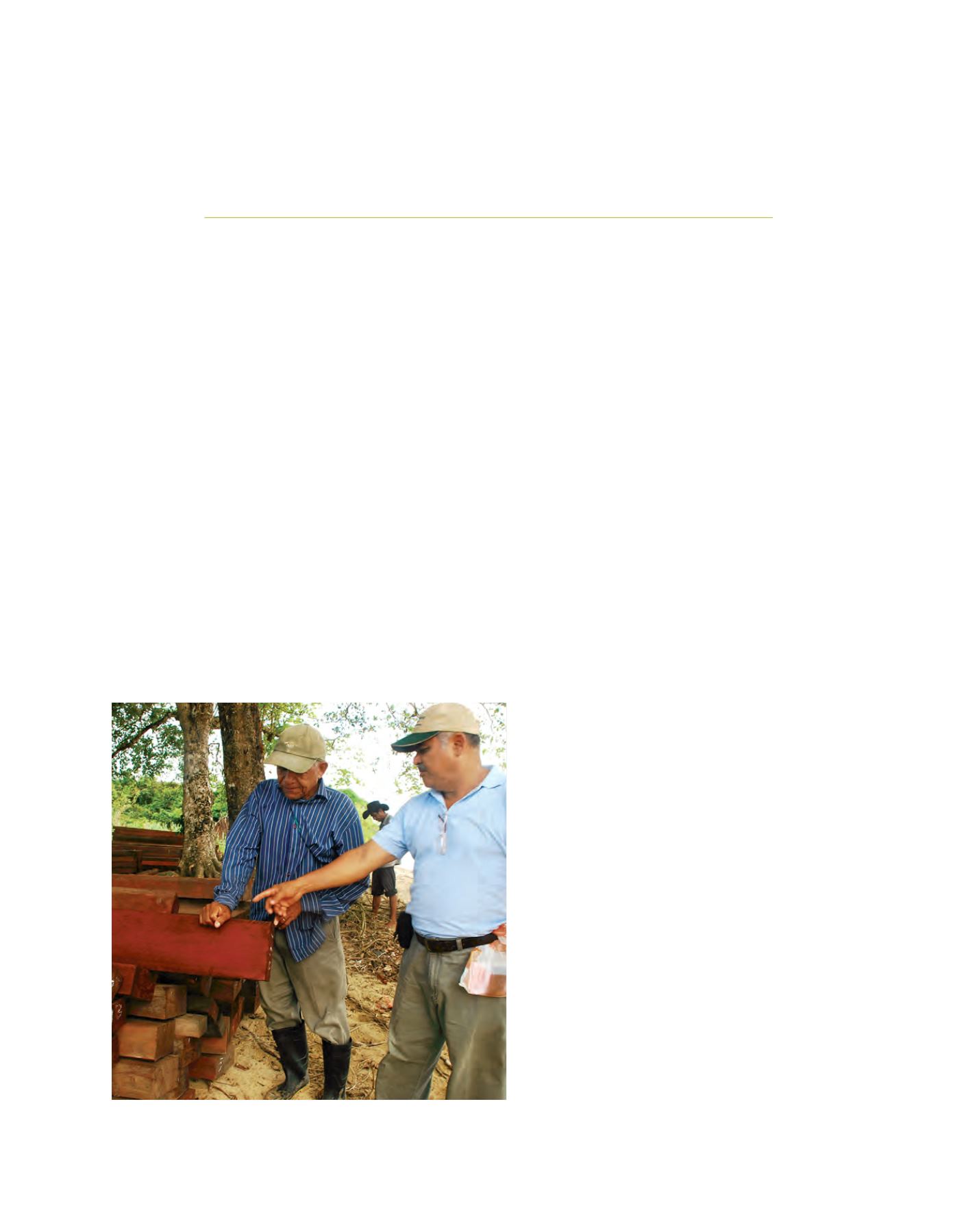

[
] 203
Community forestry in Honduras
as a bulwark against deforestation
Benjamin Hodgdon, Projects Manager, Rainforest Alliance TREES program
F
rom the air, the forest canopy of the Río Plátano Biosphere
Reserve in eastern Honduras’ Moskitia region appears
unbroken. Designated a World Heritage Site in 1982, the
830,000-hectare expanse is the anchor of the country’s largest
primary tropical rainforest, one of the largest intact forests
remaining in Central America, and home to globally important
species such as jaguar, ocelot, Baird’s tapir, scarlet and green
macaw and the great curassow. The reserve is also an interna-
tionally significant experiment in multi-use, community-based
forest management. The core zone protected area covers just a
quarter of the reserve, while the remaining area – divided into
buffer and cultural zones – allows local communities to use
their forest resources sustainably.
Over the last fifteen years, an increasing number of local groups
in the reserve, both indigenous groups and mestizos, have formed
cooperatives to manage state-licensed concessions for a range of
timber and non-timber forest products (NTFP). Most have also
founded enterprises around these forest-management activities,
creating jobs and adding value to primary products for
market sale. The successes of these enterprises have
given rise to the expansion of the model to areas outside
the reserve, in other parts of the country where produc-
tion forestry activities offer the best – and often the
only – chance for sustainable economic development.
But the threats to this community-based approach to
forest protection are serious and mounting. Earlier this
year, the Food and Agriculture Organization’s State of
the World’s Forests report found that Honduras had
the highest deforestation rate in all of Latin America
and the Caribbean from 2000-2010, ranking it as one
of the highest in the world. Conversion of forest for
cattle ranching continues to be the principle driver of
permanent deforestation in the Moskitia, as it has been
for decades.
However, this type of conversion is now increasingly
driven by narcotics trafficking rings seeking to launder
and invest drug money through illegal land deals and
cattle ranching businesses established on cleared forest
lands. The presence of these criminal groups in a part
of the country where State authority is already limited
has brought a new and menacing edge of intimidation
and violence to the deforestation front. At the same
time, an emergent culture of lawlessness and organ-
ized crime is fueling petty corruption, hindering efforts
to control the widespread illegal harvest and trade of
the region’s high-value timber species, including most
notably mahogany.
The UNICAF community forest cooperatives
In the face of this daunting array of threats, the achieve-
ments of the community forestry operations organized
under the Union of Agroforestry Cooperatives of
the Río Plátano Biosphere Reserve (UNICAF, by its
Spanish acronym) are remarkable. The eleven coopera-
tives manage concessions covering more than 100,000
hectares in both the buffer and cultural zones of the
reserve according to sustainable forest management
plans approved by the Honduran Forest Service (ICF).
With assistance from the Rainforest Alliance – and
together with long-standing support from the German
international aid agency Deutsche Gesellschaft für
Internationale Zusammenarbeit (GIZ) and the local
organization Fundación Madera Verde – the coop-
eratives have steadily improved forest operations while
A community member from an UNICAF cooperative and a Rainforest Alliance staff
member assess sawn wood quality as part of a training exercise
Image: Charlie Watson
















